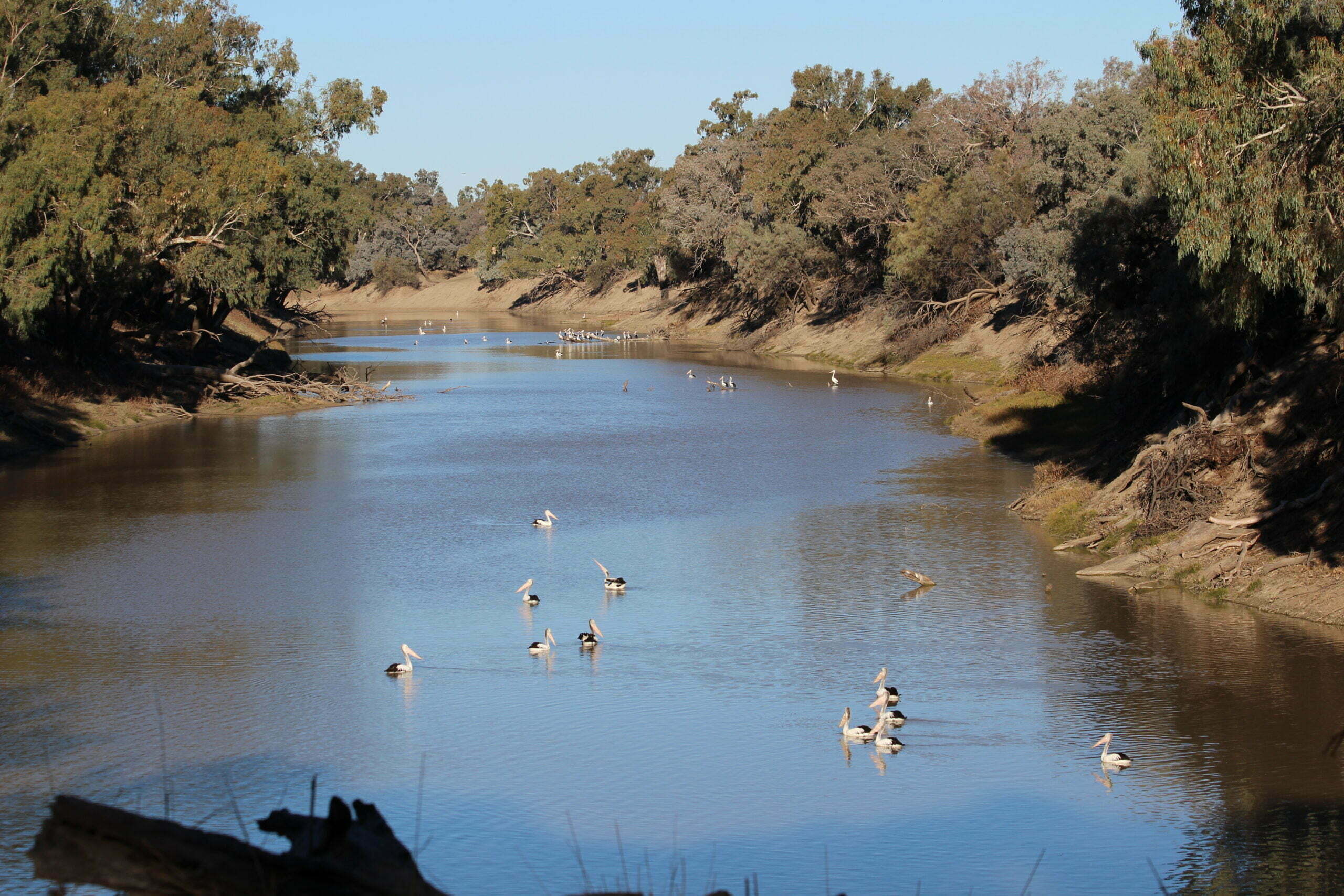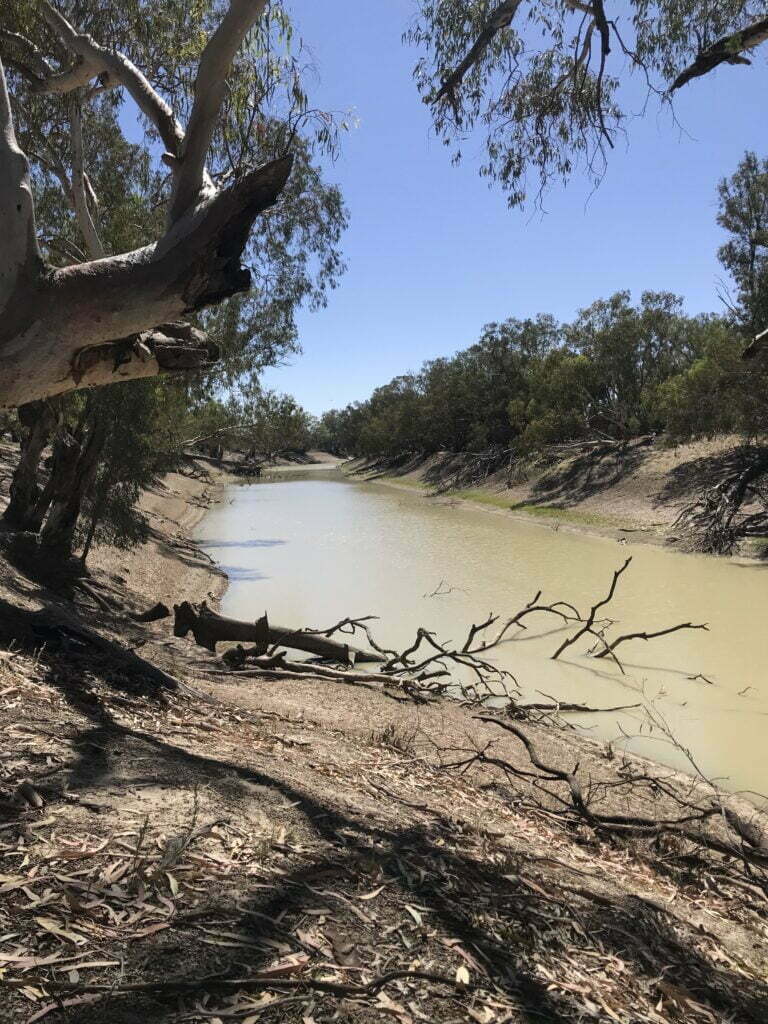Bringing Murray cod back to the Baaka
Author: Ellen Ryan
Featured Image: Murray cod caught, monitored and released at Gunbower Forest. Photo credit: Arthur Rylah Institute.
Government agencies, local communities and First Nations representatives are exploring ways to help return the once iconic Murray cod to its former glory in the Darling-Baaka River between Bourke and Louth.
The response comes after extended drought and resulting poor water quality had a devastating effect on native fish populations across the Darling-Baaka, with sampling over the last three years finding very low numbers of Murray cod in particular locations.
The monitoring, which focuses on the area between Bourke and Louth on the Darling-Baaka is part of the Commonwealth Environmental Water Office Monitoring, Evaluation and Research program (Flow MER) that looks at how river environments respond to water for the environment. Fish community surveys during 2019, 2020 and 2021 saw only six (6) Murray Cod recorded in this one reach, with no detections during the recent 2022 sampling.
Dr Paul Frazier from 2Rog Consulting has been leading the river environment monitoring program in the Warrego-Darling and the Gwydir rivers since 2014 in partnership with the University of New England, government agencies, tertiary and research institutes, and community.
Dr Frazier said the recent results paint a dire picture for that section of the Baaka, but believes everyone involved in caring for the environment and water can help recover Murray Cod if there is united commitment and effort.
“We are at a crossroads for Murray Cod in this part of the Murray-Darling Basin. Sampling shows that they are simply at numbers too low to recover naturally along this reach of the Darling-Baaka, with strategic action needed to help bring back the fish,” Dr Frazier said.

A view of the Darling river, populated by pelicans.
NSW DPI is undertaking analysis of long-term fisheries data, with preliminary results suggesting that Murray Cod abundance across NSW is improving over the last 20 years, providing hope that recovery is possible if the right management actions are undertaken. However, the recent data from the Flow-MER program suggests these improvements are not consistent across all locations.
Commonwealth Environmental Water Holder Dr Simon Banks said the results about Murray Cod numbers in the Darling-Baaka between Louth and Bourke are concerning.
“We continue to work with scientists, state agencies and communities to do what we can to support native fish across the Basin. This includes using water for the environment, protecting river flows and removing barriers to fish movement, all of which help fish feed, breed, move and recruit. Looking after our native fish is key priority for us and we value the work of the 2rog-UNE team and the Flow MER program in highlighting the need for collaboration and commitment.
“Water for the environment has helped provide refuge and connectivity during recent dry periods and provides opportunities for native fish to breed and rebuild populations after years of drought – including in the Lower Darling-Baaka. However, these results show us there is still more to be done.
“The Commonwealth Environmental Water Holder is looking for opportunities to complement existing actions with funding for habitat rehabilitation activities such as reinstating large woody habitat, which will enhance outcomes from the use of water for the environment.
“Murray Cod use large woody habitat for spawning sites, shelter and territorial markers. Detailed habitat mapping undertaken in partnership with DPI Fisheries has identified priority areas along the reach to put logs and branches back in the river for fish. We are working with DPI Fisheries to explore opportunities to support re-snagging activities in the Darling-Baaka.” added Dr Banks.

A view of the Darling river from a nearby campsite.
To the local Aboriginal people, the Baakindji people, the Parntu (Murray Cod) are an important part of life, being a food source and a cultural totem for some groups. The Darling-Baaka River around Louth is also renowned for its great fishing, with plenty of old photos featuring big catches of fish, predominantly Murray Cod. Fishers travelled long distances to catch these iconic fish.
Dr Frazier stressed that a call to action was needed.
“We need to do more to ensure this icon of the Darling-Baaka River continues to survive and thrive in the future. Strategic on-ground works to improve habitat and food sources, providing and protecting flows, fixing fish passage, and protecting fish from extraction at water diversions should all be part of a recovery program for the species.
“Ensuring a long-term stable population of Murray Cod in the Darling-Baaka is important culturally, socially, and recreationally,” added Dr Frazier.
The Lower Murray River is a complex system with diverse habitats supporting important water-dependent plants and animals. Our work here is to monitor and evaluate ecological responses to Commonwealth environmental water delivery.


The information on this website is presented by the Department of Climate Change, Energy, the Environment and Water (the Department) for the purposes of disseminating information to the public. It does not constitute legal or other professional advice.
The views and opinions expressed on this website are those of the authors and do not necessarily reflect those of the Australian Government or the Portfolio Ministers for the Department or indicate a commitment to a particular course of action.
While reasonable efforts have been made to ensure that the contents of this website are factually correct, the Commonwealth of Australia does not accept responsibility for the accuracy or completeness of its contents. The Department disclaims liability, to the extent permitted by law, for any liabilities, losses, damages and costs arising from any reliance on the contents of this website. You should seek legal or other professional advice in relation to your specific circumstances.
Use of this website is at a user’s own risk and the Department accepts no responsibility for any interference, loss, damage or disruption to your computer system which arises in connection with your use of this website or any linked website.